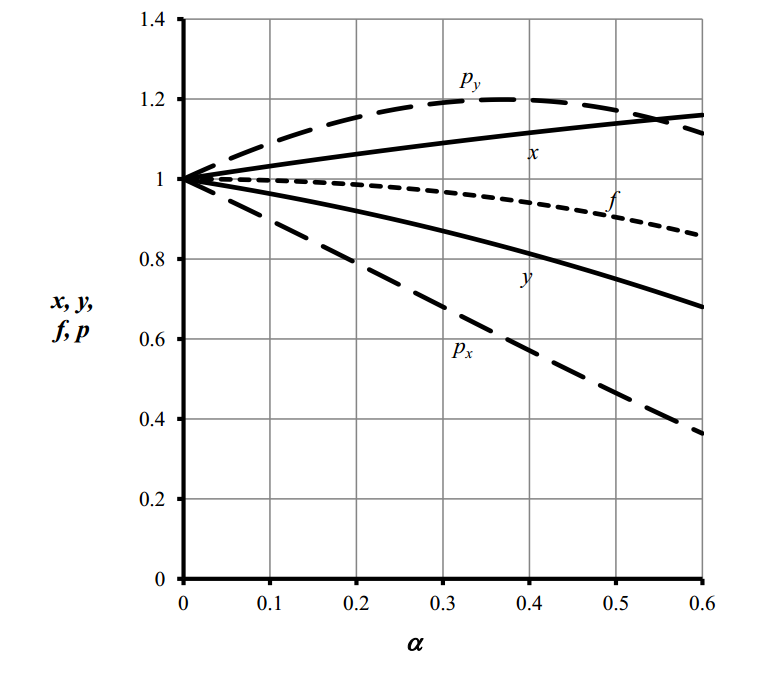Cyclists’ Time-Trial Dilemma Solved
Here’s an interesting question about bicycle racing. Imagine you are racing around a circuit in conditions that offer you a steady tailwind along one straight and a similar headwind along the other.

Your goal is to complete a certain number of laps in the shortest possible time. What should your racing strategy be? In other words, what speed should you ride into and against the wind to achiee the highest possible average speed?
Today, Alan Brad Anton gives us the answer thanks to a neat exercise in nonlinear optimisation. His goal in this calculation is simple. “I seek a “rule of thumb” that can be implemented on-the-fly, in your head, without requiring sophisticated calculations, pre-race measurements in a laboratory, or on-course communications with a coach,” he says.
And he has found one.
He begins by explaining that optimising speed in a race like this involves solving two problems. The first is to calculate the resistance from aerodynamic drag, which dominates all other drag forces in cycling at speeds greater than 15 mph.
“This is why modern time-trail bicycles have airfoil-shaped tubes and hidden control cables, and why their riders crouch in an awkward position and often wear skin suits and boat-tailed safety helmets,” he explains.
The second is to determine how much pedal power the cyclist can deliver. In this problem, Brad Anton assumes that the cyclist has a fixed inventory of energy to expend during the race.
He then goes on to simplify the problem by assuming that the track is a flat road of certain length and that a lap involves travelling in one direction with the wind in your face and the return direction with the wind at your back.
To make things even simpler, he also assumes that the rider can choose only two speeds—the tailwind-aided speed and a speed hindered by a headwind.
There are essentially three strategies that the rider can adopt. The first is to do the round trip at a single speed, increasing the pedal power when going against the wind and reducing it when with the wind.
The second option is to deliver equal pedal power throughout the journey. This keeps the rider at a kind of “sweet spot” of a certain rate of pedalling, heart beat and breathing. “This feels best to me,” says Brad Anton.
The final possibility is to find the optimal speed for different parts of the track so the rider might work harder travelling into the wind and relax with the tailwind.
Brad Anton tackles this problem by first creating a simple mathematical model of the cycling process. He then solves it for each of these three strategies in a 24 mile race with an 8.5 mph head/tailwind and a rider capable of 25 mph.
He calculates that in the optimal speed scenario, the rider can complete the course in one hour at an average speed of 24 mph. But if the rider opts for the equal power scenario, he or she will average 23.6 mph and complete the course about a minute slower. In the equal speed scenario, the rider will average 23.5 mph and complete the course even more slowly.
So the result is clear. The rider is better off optimising his or her speed appropriately for each leg of the journey.
But what of the rule of thumb that Brad Anton was after? He says that the trick is to measure the wind speed before the beginning of the race and then pick a target speed for the course.
His rule of thumb is to ride at the target speed plus a quarter of the wind speed when you have a tailwind and to ride at your target speed minus half the wind speed when the wind is in your face.
Got that?
Brad Anton ends with a message of support for his readers. “If you are vigilant (and maybe a bit lucky), you might win enough time or conserve enough energy with this trick to catch or drop other riders who have a less profitable strategy for fighting the wind. Good luck!”
Indeed!
Ref: arxiv.org/abs/1309.1741: Optimal Time-Trial Bicycle Racing with Headwinds and Tailwinds
Keep Reading
Most Popular
Large language models can do jaw-dropping things. But nobody knows exactly why.
And that's a problem. Figuring it out is one of the biggest scientific puzzles of our time and a crucial step towards controlling more powerful future models.
How scientists traced a mysterious covid case back to six toilets
When wastewater surveillance turns into a hunt for a single infected individual, the ethics get tricky.
The problem with plug-in hybrids? Their drivers.
Plug-in hybrids are often sold as a transition to EVs, but new data from Europe shows we’re still underestimating the emissions they produce.
Google DeepMind’s new generative model makes Super Mario–like games from scratch
Genie learns how to control games by watching hours and hours of video. It could help train next-gen robots too.
Stay connected
Get the latest updates from
MIT Technology Review
Discover special offers, top stories, upcoming events, and more.